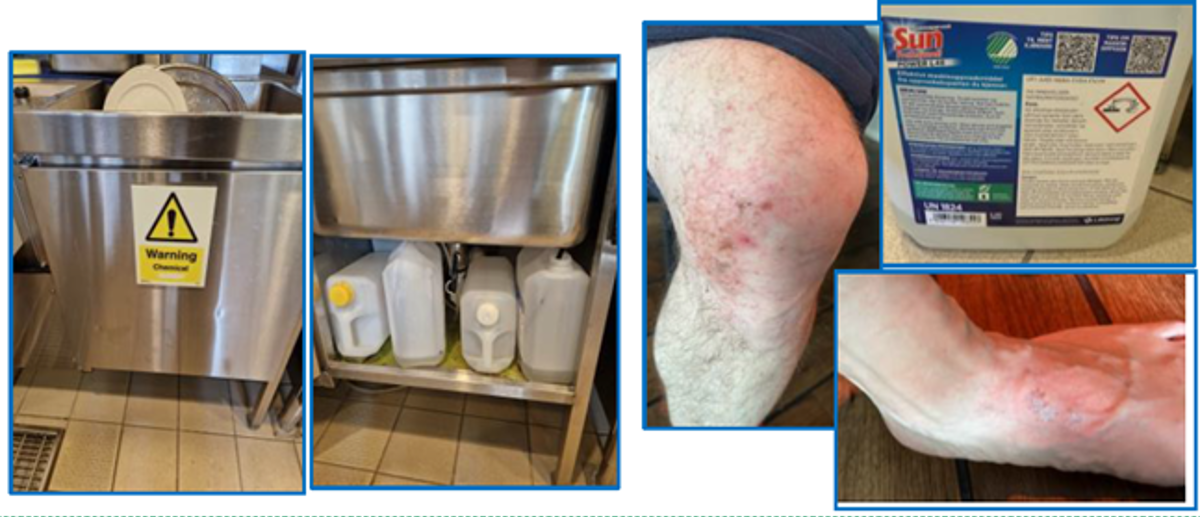Detergent chemical burn
- Safety Flash
- Published on 29 April 2025
- Generated on 20 December 2025
- IMCA SF 08/25
- 2 minute read
Jump to:
Leaked detergent resulted in slight chemical burns onboard a vessel.
What happened?
An electrician and a trainee were repairing an industrial dishwasher onboard a vessel. During the repair, some detergent leaked, and the trainee got some on his hands while cleaning up. The electrician got water mixed with detergent on his knees and safety shoes. Both suffered slight chemical burns.

What went right?
The repair of the dishwasher was conducted with proper regard for electrical isolation.
What went wrong?
· The fact that the detergent, with a pH of 14 and containing sodium hydroxide, was a “hazardous substance” was not considered - Hazardous Substance Register was not consulted.
· There was no warning label on dishwasher to identify that there was corrosive detergent inside.
· In use detergents were stored so that labels/warnings were not visible.
Lessons learned
· Don’t overlook secondary hazards (the detergent) when focusing on primary ones (the electricity).
· Involve all appropriate stakeholders to ensure a full understanding of risks – particularly if working outside your normal domain.
· Clearly mark and identify known hazards to ensure good shared awareness.
· If you find an unidentified water-like liquid on the floor or leaking from a container, always think of the worst-case scenario and wear PPE accordingly.
Related Safety Flashes
-
IMCA SF 20/22
5 September 2022
-
-
IMCA SF 20/21
22 July 2021
-
IMCA SF 16/17
27 June 2017
-
IMCA Safety Flashes summarise key safety matters and incidents, allowing lessons to be more easily learnt for the benefit of the entire offshore industry.
The effectiveness of the IMCA Safety Flash system depends on the industry sharing information and so avoiding repeat incidents. Incidents are classified according to IOGP's Life Saving Rules.
All information is anonymised or sanitised, as appropriate, and warnings for graphic content included where possible.
IMCA makes every effort to ensure both the accuracy and reliability of the information shared, but is not be liable for any guidance and/or recommendation and/or statement herein contained.
The information contained in this document does not fulfil or replace any individual's or Member's legal, regulatory or other duties or obligations in respect of their operations. Individuals and Members remain solely responsible for the safe, lawful and proper conduct of their operations.
Share your safety incidents with IMCA online. Sign-up to receive Safety Flashes straight to your email.